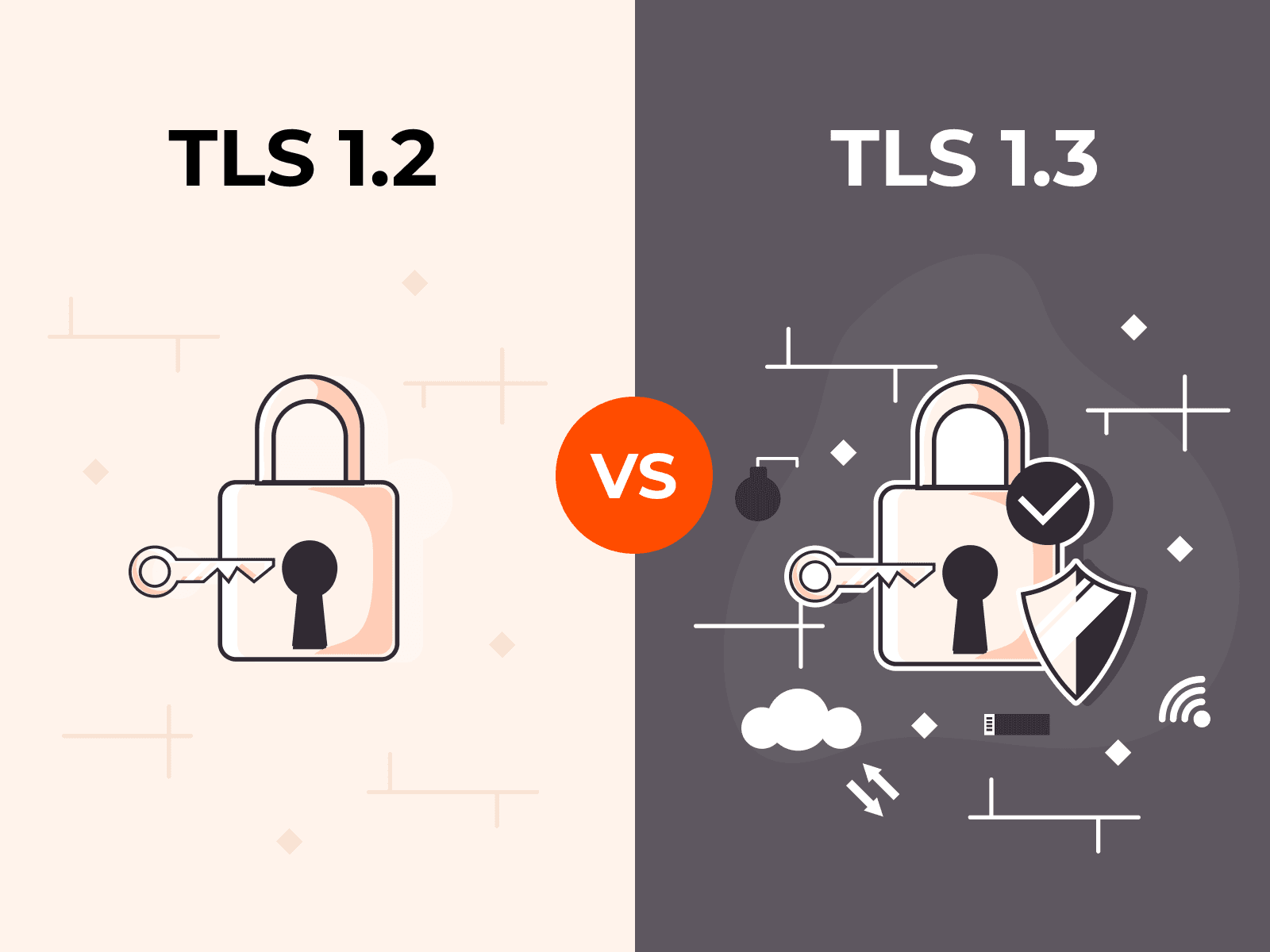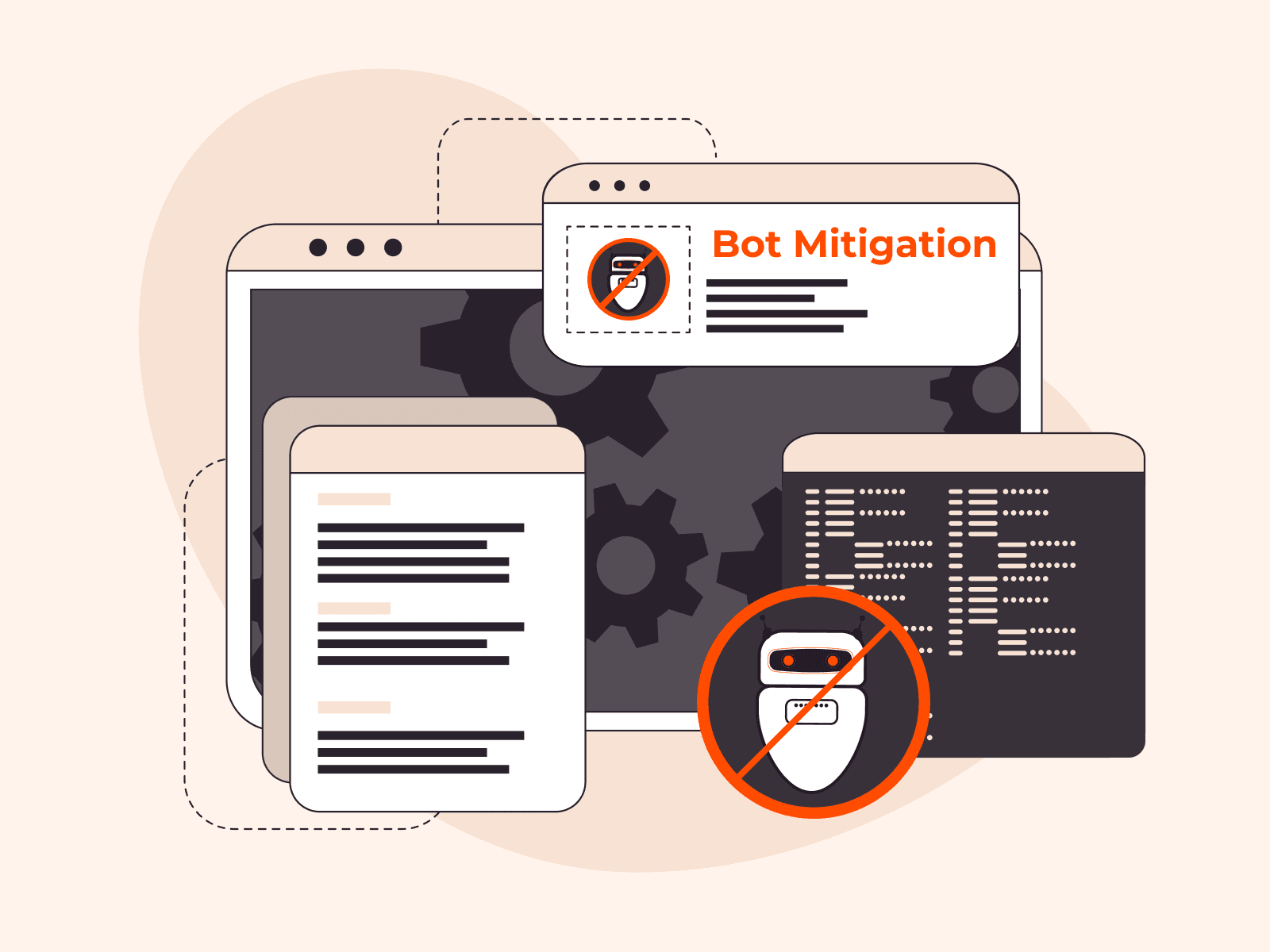A SYN flood is a type of distributed denial-of-service (DDoS) attack that exploits the TCP three-way handshake process to overwhelm a target server, making it inaccessible to legitimate traffic. Over 60% of DDoS attacks in 2024 involve SYN flood vectors as a primary or secondary method.
The attack works by interrupting the normal TCP connection process. During a standard handshake, the client sends a SYN packet, the server replies with SYN-ACK, and the client responds with ACK to establish a connection.
SYN flood attacks break this process by sending thousands of SYN packets, often with spoofed IP addresses, and never sending the final ACK.
This interruption targets the server's connection state rather than bandwidth. The server maintains a backlog queue of half-open connections waiting for the final ACK, typically holding between 128 and 1024 connections depending on the OS and configuration. When attackers flood this queue with fake requests, they exhaust server resources, such as CPU, memory, and connection slots. This makes the system unable to accept legitimate connections.
Recognizing a SYN flood early is critical. Typical attack rates can exceed tens of thousands of SYN packets per second targeting a single server. Signs include sudden spikes in half-open connections, server slowdowns, and connection timeouts for legitimate users. Attackers also use different types of SYN floods, ranging from direct attacks using real source IPs to more complex spoofed and distributed variants. Each requires specific detection and response methods.
What is a SYN flood attack?
A SYN flood attack is a type of DDoS attack that exploits the TCP three-way handshake to overwhelm a target server. The attacker sends a large number of SYN packets, often with spoofed IP addresses, causing the server to allocate resources and wait for final ACK packets that never arrive.
During a standard TCP handshake, the client sends a SYN, the server replies with SYN-ACK, and the client responds with ACK to establish a connection. SYN flood attacks interrupt this process by never sending the final ACK.
The server maintains a backlog queue of half-open connections waiting for completion. SYN floods fill this queue, exhausting critical server resources, including CPU, memory, and connection slots.
How does a SYN flood attack work?
A SYN flood attack exploits the TCP handshake to exhaust server resources and block legitimate connections. The attacker sends a massive volume of SYN packets to the target server, typically with spoofed IP addresses, forcing the server to allocate resources for connections that never complete.
In a typical TCP handshake, the computer sends a SYN packet, the server responds with SYN-ACK, and the client sends back an ACK to establish the connection. SYN flood attacks break this process by flooding the server with SYN requests but never sending the final ACK.
The server keeps each half-open connection in a backlog queue, usually holding 128 to 1024 connections, depending on the system. It waits about 60 seconds for the ACK that never arrives.
This attack doesn't require high bandwidth. Instead of overwhelming network capacity like volumetric DDoS attacks, SYN floods target the server's connection state table. When the backlog queue fills up, the server cannot accept new connections, causing legitimate users to experience connection timeouts and errors.
The use of spoofed IP addresses makes the attack harder to stop. The server sends SYN-ACK responses to fake addresses, wasting resources and complicating traceability. Attack rates can exceed tens of thousands of SYN packets per second, quickly exhausting even well-configured servers.
What are the signs of a SYN flood attack?
Signs of a SYN flood attack are observable indicators that show a server is being targeted by malicious SYN packets designed to exhaust connection resources. These signs include:
- Sudden SYN packet spike: Network monitoring tools show unusual increases in incoming SYN requests, jumping from normal levels to thousands or tens of thousands per second within minutes.
- High half-open connections: The server's connection table fills with incomplete TCP handshakes waiting for ACKs that never arrive. Most systems maintain backlog queues of 128 to 1,024 connections.
- Elevated resource usage: CPU and memory consumption rise sharply as the server tracks thousands of pending connections, even when actual data transfer is low.
- Failed legitimate connections: Users cannot establish new connections because the backlog queue is full, causing timeouts or error messages.
- Increased TCP retransmissions: The server repeatedly sends SYN-ACK packets in an attempt to complete handshakes that never complete, wasting bandwidth and processing power.
- Spoofed source addresses: Log analysis shows SYN packets arriving from random or non-existent IPs, masking the attacker's true location.
- Connection timeout patterns: Half-open connections remain in the queue for extended periods, typically around 60 seconds, preventing new legitimate requests.
What are the different types of SYN flood attacks?
Types of SYN flood attacks refer to the different methods attackers use to exploit the TCP handshake process and overwhelm target servers with connection requests. The types of SYN flood attacks are listed below.
- Direct attacks: The attacker sends SYN packets from their real IP address to the target server without spoofing. This method is simple but exposes the attacker's location, making it easier to trace and block.
- Spoofed IP attacks: The attacker sends SYN packets with forged source IP addresses, making it difficult to trace the attack origin. The server responds with SYN-ACK packets to these fake addresses, wasting resources. This is the most common variant because it protects the attacker's identity.
- Distributed SYN floods: Multiple compromised devices (botnet) send SYN packets simultaneously to a single target from different IP addresses. This increases attack volume and makes blocking more difficult.
- Pulsed attacks: The attacker sends bursts of SYN packets in waves rather than a constant stream, creating periodic spikes that can evade traditional rate-limiting systems.
- Low-rate attacks: The attacker sends SYN packets at a slow, steady rate to stay below detection thresholds while exhausting connection resources over time. These attacks are effective against servers with smaller connection backlogs.
- Reflection attacks: The attacker spoofs the victim's IP address and sends SYN packets to multiple servers, causing those servers to send SYN-ACK responses to the victim. This amplifies the attack.
- Hybrid volumetric attacks: The attacker combines SYN floods with other DDoS methods, such as UDP amplification or HTTP floods, to overwhelm multiple network layers simultaneously.
What is the impact of SYN flood attacks on networks?
SYN flood attacks severely exhaust network resources, making servers inaccessible to legitimate users by filling connection queues with incomplete TCP handshakes. Attackers send thousands of SYN packets per second without completing the handshake, causing the server to allocate memory and CPU resources for connections that remain active for about 60 seconds.
The impact can reduce legitimate connection success rates by over 90% during peak periods, even though traffic volume is relatively low. The server's backlog queue (typically 128-1024 half-open connections) fills rapidly, preventing new connections and causing service outages until defenses are activated.
How to detect SYN flood attacks
Detection involves monitoring network traffic, analyzing connection states, and tracking server resource usage for anomalies. Key steps include:
- Monitor incoming SYN packet rates and compare to baseline traffic. Sudden spikes to thousands of packets per second, especially from diverse IPs, indicate a potential attack.
- Check half-open connection counts in the TCP backlog queue. Counts approaching or exceeding limits indicate resource exhaustion.
- Analyze the ratio of SYN packets to completed connections (SYN-ACK followed by ACK). A normal ratio is close to 1; during an attack, it may exceed 10:1.
- Monitor CPU and memory usage for sudden spikes without legitimate traffic growth. SYN floods consume resources by maintaining state for half-open connections.
- Monitor TCP retransmissions and connection timeout errors. Sharp increases indicate the backlog queue is full.
- Examine source IP addresses for spoofing. Unallocated, geographically impossible, or sequential addresses suggest attacker evasion.
- Set automated alerts that trigger when multiple indicators occur: high SYN rates, elevated half-open connections, high CPU, and rising retransmissions.
How to prevent and mitigate SYN flood attacks
Prevention and mitigation require multiple defense layers that detect abnormal connection patterns, filter malicious traffic, and optimize server configurations for incomplete handshakes. Key strategies include:
- Enable SYN cookies: Handle connection requests without maintaining state for half-open connections.
- Configure rate limiting: Restrict the number of SYN packets accepted from individual IPs per time frame, based on normal traffic patterns.
- Reduce timeout periods: Shorten half-open connection timeouts from 60 to 10-20 seconds to free resources faster.
- Deploy network monitoring: Track SYN rates, half-open counts, and retransmissions in real time. Set alerts when thresholds are exceeded.
- Filter spoofed IPs: Enable reverse path filtering (RPF) to block packets from invalid sources.
- Increase backlog queue size: Expand from defaults (128-512) to 1024 or higher and adjust memory to support it.
- Use ISP or DDoS protection services: Filter SYN flood traffic upstream before it reaches your network. Read here more about our DDoS protection services.
- Test defenses: Run controlled SYN flood simulations to verify rate limits, timeouts, and monitoring alerts.
Best practices for protecting against SYN floods
Best practices include implementing multiple layers of defense and optimizing server configurations. Key practices are:
- SYN cookies: Avoid storing connection state until handshake completes. Encode connection info in SYN-ACK sequence numbers.
- Rate limiting: Restrict SYN packets from a single source to prevent rapid-fire attacks, typically 10-50 packets/sec/IP.
- Backlog queue expansion: Increase TCP backlog queue beyond defaults to handle spikes.
- Connection timeout reduction: Reduce half-open connection timeout to 10-20 seconds while balancing legitimate slow clients.
- Traffic filtering: Drop packets with spoofed or reserved IP addresses using ingress/egress filtering.
- Load balancing: Distribute SYN packets across servers and validate connections before forwarding.
- Anomaly detection: Monitor metrics for spikes in SYN packets, half-open connections, and CPU usage.
- Proxy protection: Use reverse proxies or scrubbing services to absorb and validate SYN requests.
How has SYN flood attack methodology evolved?
SYN flood attacks have evolved significantly. What started as simple single-source attacks has transformed into sophisticated multi-vector campaigns combining IP spoofing, distributed botnets, and low-rate pulsed techniques designed to evade modern detection systems.
Early SYN floods were straightforward, with a single attacker sending large volumes of SYN packets from easily traceable sources. Modern attacks use thousands of compromised IoT devices and randomized spoofed addresses to hide origin and distribute traffic.
Attackers have adapted to bypass defenses such as SYN cookies by combining SYN floods with application-layer attacks or sending timed bursts that stay below rate-limiting thresholds while still exhausting server resources. This reflects a shift from brute-force volume attacks to intelligent, evasive techniques targeting TCP connection weaknesses and DDoS mitigation systems.
What are the legal and ethical considerations of SYN flood attacks?
Legal and ethical considerations include laws, regulations, and moral principles that govern execution, impact, and response to these attacks:
- Criminal prosecution: SYN flood attacks violate computer crime laws, such as the US Computer Fraud and Abuse Act (CFAA). Penalties include fines up to $500,000 and prison sentences of 5-20 years. International treaties, like the Budapest Convention on Cybercrime, enable cross-border prosecution.
- Civil liability: Attackers can face lawsuits for lost revenue, recovery costs, and reputational harm. Courts may award damages for negligence, intentional interference, or breach of contract.
- Unauthorized access: Attacks constitute unauthorized access to systems. Even testing without explicit permission is illegal; researchers must obtain written authorization.
- Collateral damage: Attacks often affect third parties, such as shared hosting or ISPs, raising ethical concerns about disproportionate harm.
- Attribution challenges: Spoofed IPs complicate enforcement. Innocent parties may be misattributed, requiring careful verification.
- Defense legality: Organizations defending against attacks must ensure countermeasures comply with laws. Aggressive filtering can unintentionally affect legitimate users.
- Research ethics: Security research must avoid unauthorized testing. Academic standards require informed consent, review board approval, and responsible disclosure.
- State-sponsored attacks: Government-conducted attacks raise questions under international law and rules of armed conflict. Attacks on critical infrastructure may violate humanitarian principles.
How do SYN flood attacks compare to other DDoS attacks?
SYN flood attacks differ from other DDoS attacks by targeting connection state rather than bandwidth. Volumetric attacks, like UDP floods, overwhelm network capacity with massive data, while SYN floods exhaust server resources through half-open connections at lower traffic volumes.
SYN floods attack at the transport layer, filling connection queues before requests reach applications, unlike application-layer attacks such as HTTP floods. Detection differs as well; volumetric attacks show clear bandwidth spikes, whereas SYN floods produce elevated SYN packet rates and half-open connection counts with normal total bandwidth.
Mitigation strategies also differ. Rate limiting works against volumetric floods but is less effective against distributed SYN floods. SYN cookies and connection timeout adjustments specifically counter SYN floods.
Frequently asked questions
What's the difference between a SYN flood and a regular DDoS attack?
A SYN flood is a specific DDoS attack exploiting the TCP handshake. Attackers send thousands of SYN requests without completing the connection, quickly exhausting server resources, even with lower traffic volumes than volumetric DDoS attacks.
How much bandwidth is needed to launch a SYN flood attack?
Minimal bandwidth is needed—just 1-5 Mbps can exhaust a server's connection table by sending thousands of small SYN packets per second.
Can a firewall alone stop SYN flood attacks?
No. Standard firewalls lack mechanisms to manage half-open connection states and distinguish legitimate SYN packets from attack traffic. Additional protections like SYN cookies, rate limiting, and connection tracking are required.
What is the cost of SYN flood mitigation services?
Costs range from $50 to over $10,000 per month depending on traffic volume, attack frequency, and protection features. Pricing is usually based on bandwidth protected or tiered monthly plans.
How long does a typical SYN flood attack last?
Attacks typically last a few minutes to several hours. Some persist for days if resources and objectives are sustained.
Are cloud-hosted applications vulnerable to SYN floods?
Yes. Cloud-hosted applications rely on TCP connections that attackers can exhaust with thousands of incomplete handshake requests per second.
What tools can be used to test SYN flood defenses?
Tools like hPing3, LOIC (Low Orbit Ion Cannon), and Metasploit simulate controlled SYN flood traffic to test protection mechanisms.
Related articles
Subscribe to our newsletter
Get the latest industry trends, exclusive insights, and Gcore updates delivered straight to your inbox.






